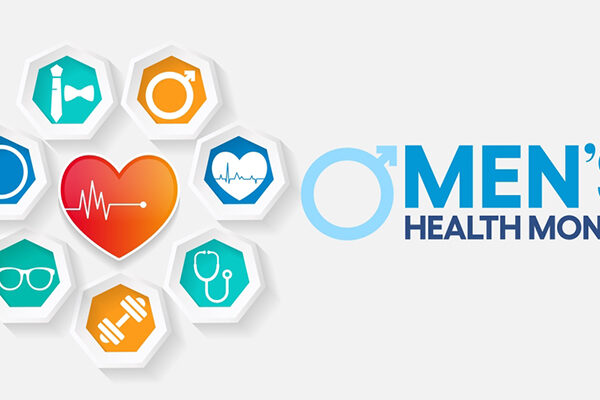Updated on March 14, 2023
Introduction
Clinical trials test new methods of diagnosing, treating or preventing health problems. The goal of these processes is to determine whether a treatment option is both safe and effective. Many clinical trials investigate novel therapies and methods of detecting, diagnosing, or measuring disease severity. Some are even researching ways to prevent diseases from occurring. Each clinical trial consists of distinct phases. From the phase 1 clinical trial which investigates whether the novel intervention is safe and observes the side effects it causes, to the phase 4 clinical trials which aim to determine whether a new intervention is better than the existing ones.
Continue reading to learn more about the clinical trials, what happens during each clinical trial phase, and how long each phase lasts.
What Are Clinical Trials?
Clinical trials are the fastest and safest way to find novel treatments that may benefit people. Every medication, therapy, and intervention before coming into the market go through the clinical trial process. Some clinical trials test methods for detecting disease early, sometimes before even symptoms appear. While others test out ways to prevent health problems.
Clinical research compares the effects of one treatment to those of the other. It may involve patients, healthy people, or both. Clinical trials are divided into phases. During each clinical trial phase, more information is gathered about the potential treatment, the risks, and how the treatment improves the quality of life.
Also Read: What is Good Clinical Practice in Research?
Why Do We Need Clinical Trials?
Clinical trials are responsible for the majority of modern medical interventions. This has resulted in the development of new treatments for the vast majority of diseases and conditions, including cancer, heart disease, high blood pressure, and asthma. Clinical trials result in the accessibility of new interventions that enable people to live longer lives with less pain or disability. They help us determine whether new drugs, diagnostics, or treatments are both safe and effective.
Clinical trials can also aid in the improvement of healthcare services by raising treatment standards. Doctors and hospital staff involved in clinical trials receive ongoing training to ensure they are able to provide the highest level of patient care.
What Are Clinical Trial Phases?
Clinical trials proceed through four phases to test a new treatment, determine the appropriate dosage, and investigate side effects. If researchers discover that a drug or other intervention is safe and effective after the first three phases, the FDA approves it for clinical use and continues to monitor its effects.
What Is A Phase 1 Clinical Trial?
Phase 1 clinical trials, which can last several months to a year, determine whether a medication is safe for human use. This phase is typically small, enrolling between 20 and 100 volunteers. Some trials only accept participants who are healthy and often provide financial compensation for their time. Other trials may accept participants who have the condition that the drug is designed to treat.
Doctors will give a minimal dose of the drug at the start of the phase, to measure its absorption, metabolization, and excretion by the body, and monitor for side effects. The goal of phase 1 clinical trial is to demonstrate safety. While the drug may relieve symptoms, a phase 1 trial does not intend to illustrate how effective the therapy is. If researchers determine that the drug is safe, it will move on to phase 2.
How Long Does Phase 1 Clinical Trial Last?
This phase of clinical trial evaluates safety by identifying any adverse side effects, but it is not aimed to evaluate the effectiveness of the potential treatment. Usually, a phase I clinical trial study takes several months due to the close monitoring of participants.
What Is A Phase 2 Clinical Trial?
This clinical trial phase analyzes both the safety and effectiveness of a drug or medical device. Trials at this stage can last several months to a few years and can include up to several hundred patients with the condition.
Phase 2 clinical trial is typically randomized, with one group of participants receiving the study drug and the other receiving a placebo or the current standard of care. Phase 2 clinical trials can also be double-blinded, which means that neither the researchers nor the participants are aware of who received the study drug. To advance to phase 3 clinical trials, the therapy must be safe and effective for the participants.
What Are Phase 3 Clinical Trials?
Phase 3 clinical trials typically involve a large sample size and utilize a randomized and blinded approach to compare the intervention to other standard or experimental interventions.
Following phase 3 clinical trials, a pharmaceutical company can apply to the U.S. Food and Drug Administration (FDA) for approval to begin marketing the drug. A pharmaceutical company can apply to the FDA with a New Drug Application (NDA) or a Biologics License Application (BLA). The FDA then reviews the trial results to determine whether it will approve the drug and allow the pharmaceutical company to begin marketing it to the general public. The FDA may also order more research or hold a hearing to determine whether the drug’s benefits outweigh its risks.
What Are Phase 4 Clinical Trials?
Phase 4 clinical trials, also known as “Post-Approval Research and Monitoring,” takes place after a drug or device has been approved. The primary goal of the phase 4 trial is to assess the drug’s performance in real-world scenarios, to investigate the long-term risks and benefits of using the drug, and to identify any unusual side effects.
Phase 4 trials are conducted in varied populations across multiple centers to eliminate any bias or unfair influence and to ensure any rare side effects that may have been missed in earlier trials are identified and reported to the regulatory authorities.
It is an important step in the drug approval process, as it can help identify any potential risks to patients that were not discovered during pre-marketing (phase I-III) trials. This includes any serious side effects related to the drug, as well as any potential complications for patients with certain comorbidities or when taking the drug in combination with certain medications. This information may require advertised warnings or lead to the drug being removed from the market.
How Long Do Phase 4 Trials Last?
Phase 4 clinical trials are aimed to provide broader information about the efficacy and safety of the new medication or intervention in large numbers of patients. This phase is meant to assess the drug’s long-term effects. Less common adverse events may be detected in these circumstances. This phase involves thousands of people.
The duration of a Phase IV clinical trial is variable and depends on the drug or treatment being tested, primary and secondary endpoints, and the funding source. Generally, these trials can last from a few months to several years after the drug has been approved by the FDA, and relevant data must be reported periodically.
Takeaway
Clinical trials are designed to determine whether a new drug, treatment, or combination works and is safe for people to use. It occurs to test new treatments before they can be approved by the Food and Drug Administration (FDA).
Clinical trials happen in phases. The new intervention is tested in the early stages of phase 1 clinical trial on a small number of participants to determine its safety and effectiveness. If the intervention appears to be promising, it may progress to the later stages of phase 4 clinical trial testing in which the number of participants is increased to gather more information on the effectiveness and potential side effects.





